Parma in 3 minutes: all you need to know about the ducal city when you’re planning a travel in Emilia-Romagna
Also known as the Ducal city, due to its history but also from the aristocratic attitude its inhabitants, Parma it is also a University headquarter since the eleventh century and, due to its amazing food traditions, in December 2015 it has also become a UNESCO Creative City for Gastronomy. But Parma is above all a city you have to feel with eyes and taste, finding the visible signs of its Aristocratic past, with its tree-lined avenues, its nineteenth-century gardens and its Boulevards along the Parma River.
Probably founded by Etruscan, the city of Parma developed and flourished at the time of the Roman colonization of North Italy, with a strategic role compared to the traffic coming from today’s Liguria and directed towards the great northern-European routes. Border town guarding the Apennine foothills in 1545 Pope Paul III (born Alessandro Farnese) established the Duchy of Parma, entrusting it to his illegitimate son Pier Luigi Farnese.
From that moment, and until 1731, the city of Parma will follow the events of the House of Farnese, passing through the times in the hands of the House of Bourbon and then to the House of Habsburgs. After the Napoleonic Wars, in 1814 the Duchy of Parma was re-established and temporarily entrusted to Marie Louis, and, in 1860 it was definitively annexed the Duchy and the city of Parma enters the history of the Kingdom of Italy.
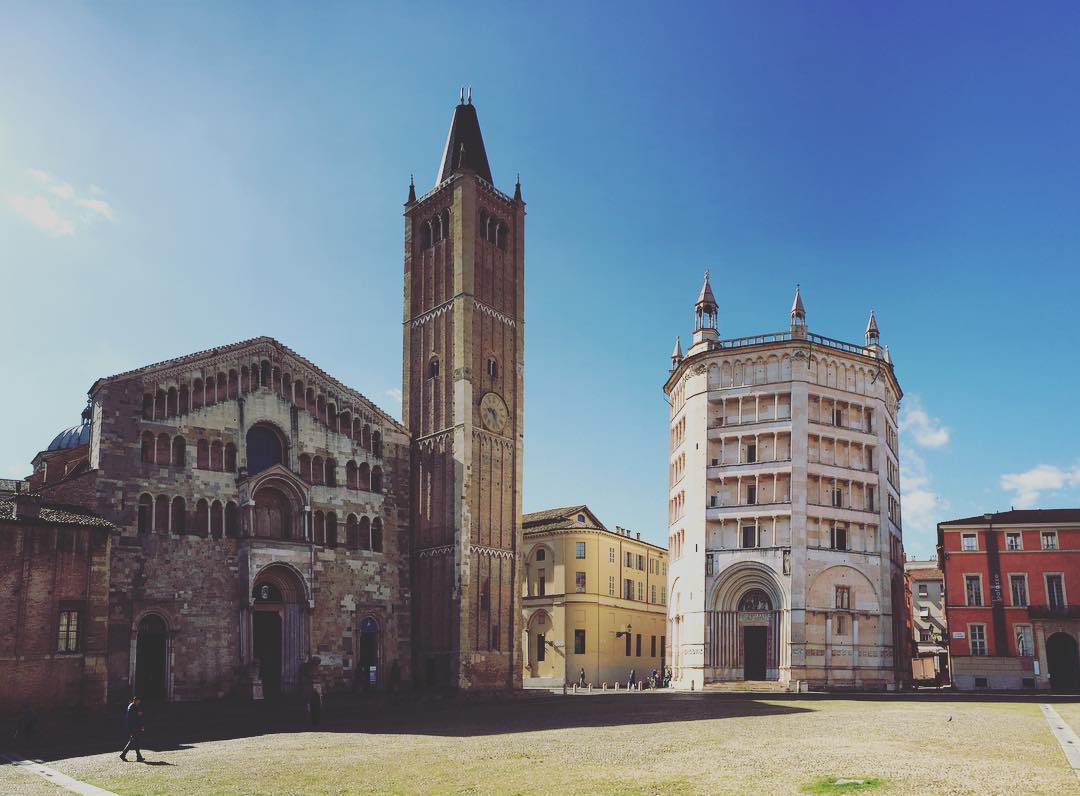
Parma – Piazza del Duomo, Ph. @nar_nehc
Parma distinguished its city center with stupendous noble palaces that combine Italian taste with the sophistication of European courts, and it is one of the few Italian cities which are often compared with Paris, The centerpiece of the city is the Pilotta Palace, a gigantic unfinished complex, and former Ducal residence – now a Museum -, from which you can quickly reach all the most interesting points of the city such as the Baptistery and the Duomo, which houses the unmissable dome frescoed by Correggio. Do not miss also the frescoes of Parmigianino in the church of “Santa Maria della Steccata” as well as the works contained in the church of San Giovanni Evangelista where we still find Parmigianino and Correggio works.

Parma – Regio Theatre, Ph. Regio Theatre
But Parma is also a city of music and theater, a passion that could be perceived in the variety of proposals and structures dedicated to it: the Paganini Auditorium, the House of Music, the Arturo Toscanini Museum, the House of Sound and not least the Regio Theatre, which was inaugurated in 1829 and which is still one of the most renowned theaters in the world. We suggest also a walk through the Boulevards of Parco Ducale, which was restored in 1749 by the French architect Alexandre Petitot.
The city of Parma is also famous for its good life and good taste. The most popular Italian gastronomic products in the world come from this part of Emilia-Romagna: thousands of Parmigiano Reggiano wheels await maturation in silent and remote farmhouses. Along the hills, cellars of manors and castles hide from the eyes of the curious the delicious cured meats and hams, that only this special micro-climate of can create.
THE MUSEUMS
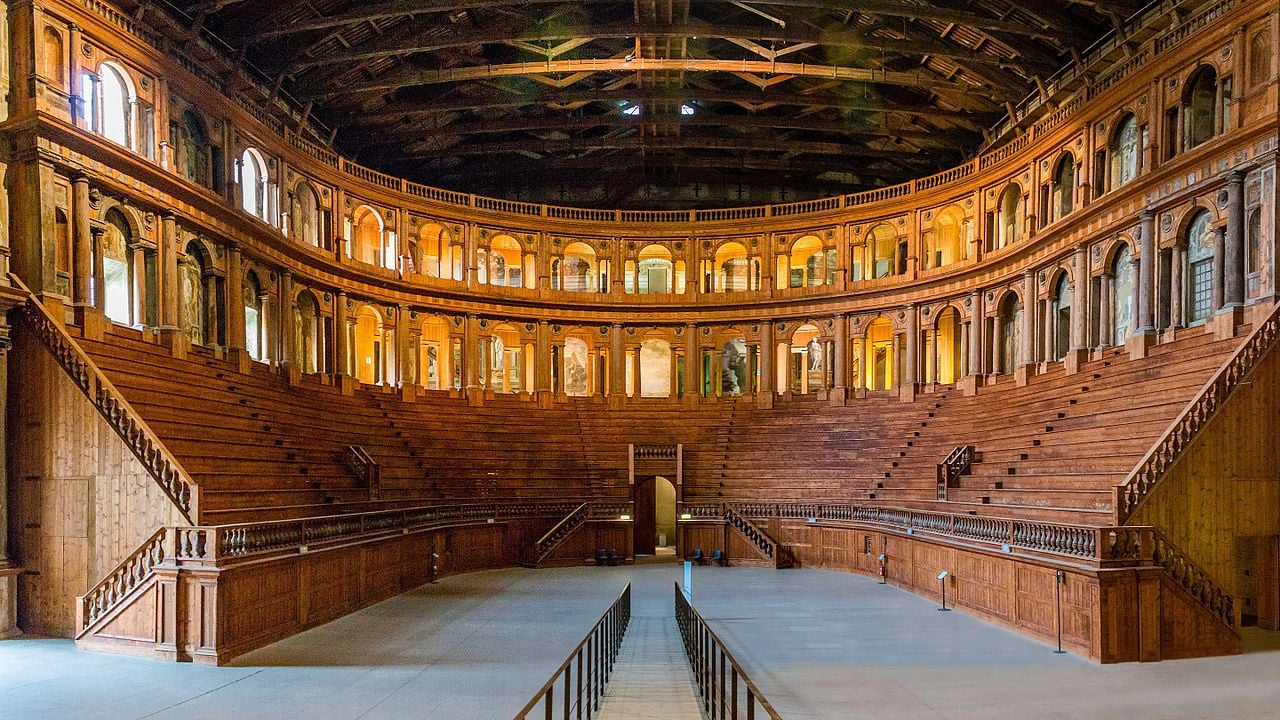
Parma – Teatro Farnese, Ph. www.bestofcinqueterre.com
Among the museums of Parma worth a visit the Pilotta Palace, which houses in its spaces the fabulous Farnese Theater and the National Gallery, one of the most impressive and important collections of paintings of Italy. It also worth a visit the University Museum of Communication which is housed within the Cistercian Abbey of Valserena and which preserves the most extensive visual and design cultural heritage in Italy in the twentieth century, gathering over 12 million materials.
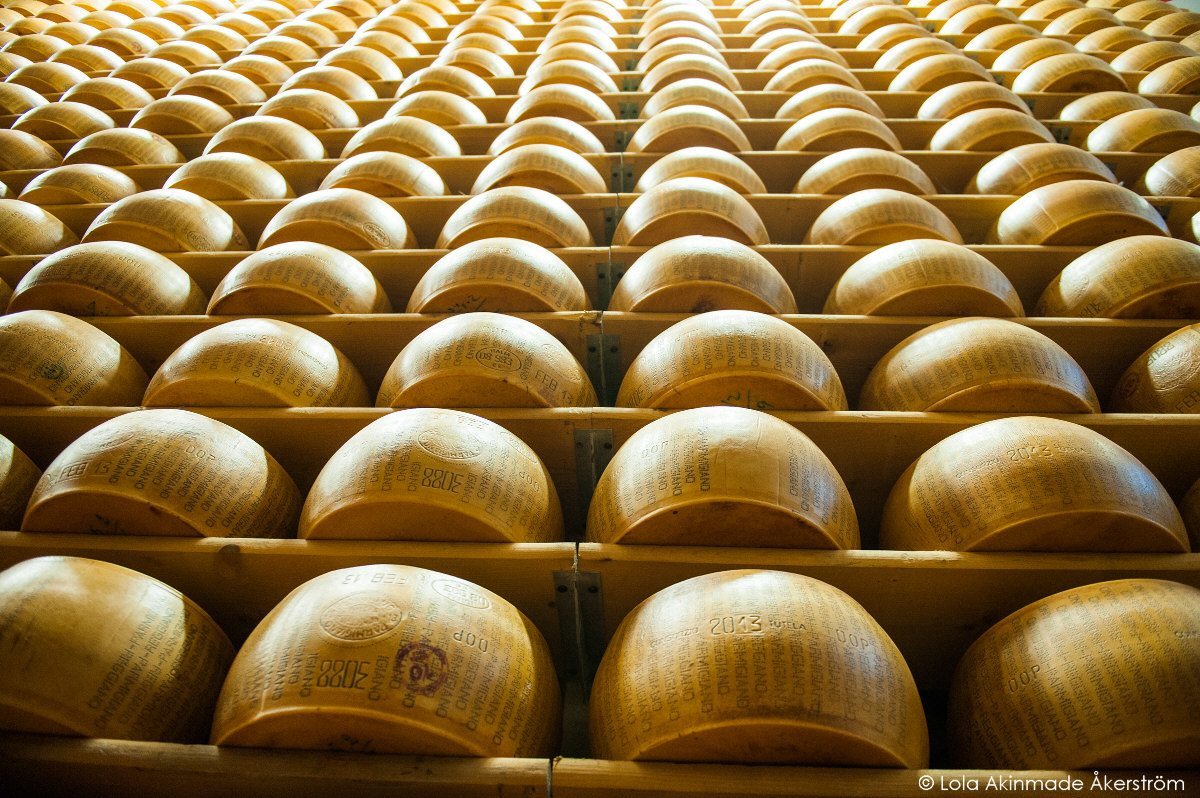
Parmigiano Reggiano – Ph. Lola Akinmade
For those who are interested in the Parma area, we recommend the Giuseppe Verdi National Museum, dedicated to the great Italian composer and hosted within the renowned Villa Pallavicino in Busseto, the Magnani Rocca Foundation which houses works ranging from Tiziano to Renoir, from Goya to Rubens, passing through De Chirico, Burri and much more.
BEYOND THE CITY OF PARMA
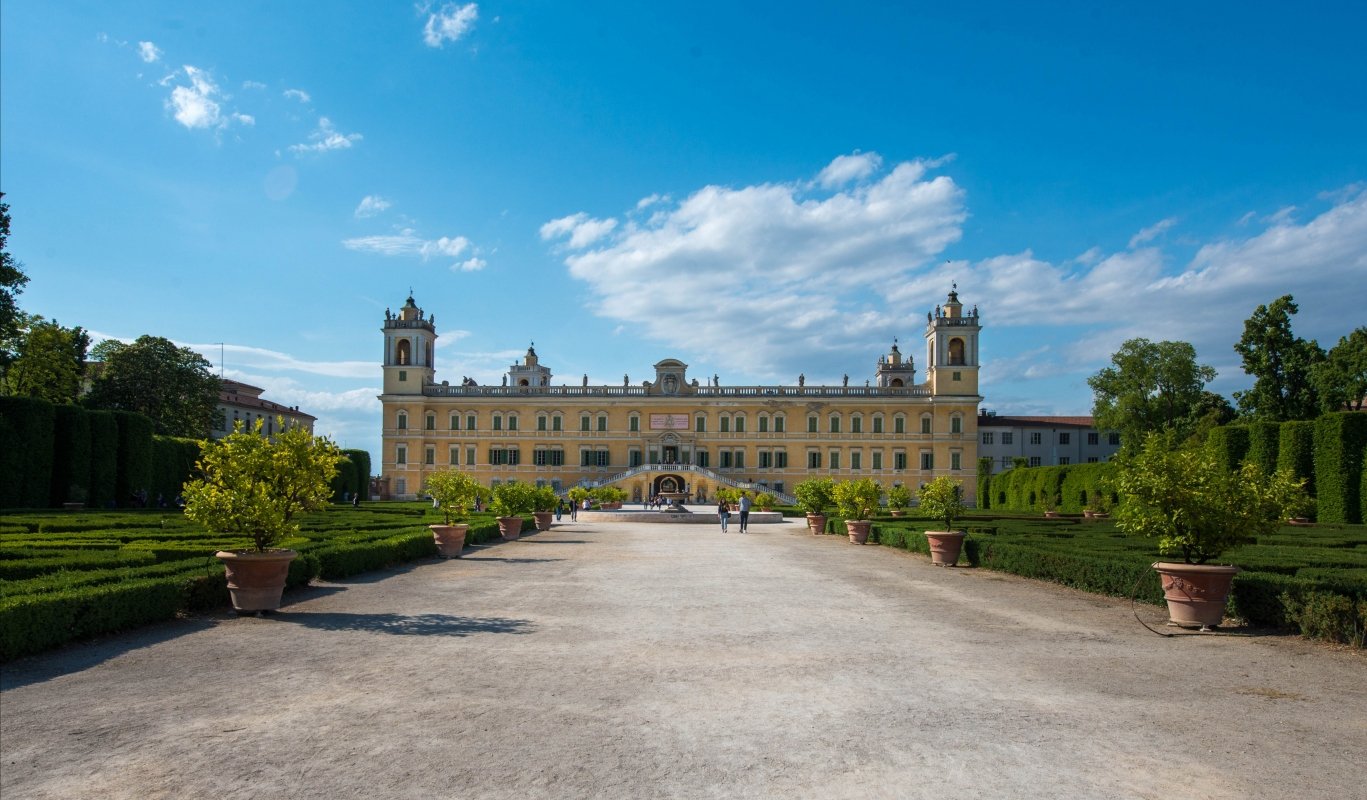
Colorno – Ducal Palace, Ph. @wwikiwalter
Parma’s territory represents a small summary of all the beauty you can find in Italy. From the banks of the Po River to the Apennine peaks we could see a succession of ancient castles, noble manor houses, and villas. Country residences, food factories, and museums set in a varied and lush landscape.
In the so-called Bassa Padania (the north Italian Region which extends throughout the Po river valley) the culture of the land and the processing of pork meat are transformed into true works of culinary art with ancient traditions, even if there are architectural masterpieces such as the Colorno Palace with its vast gardens and the Fontanellato Castle.
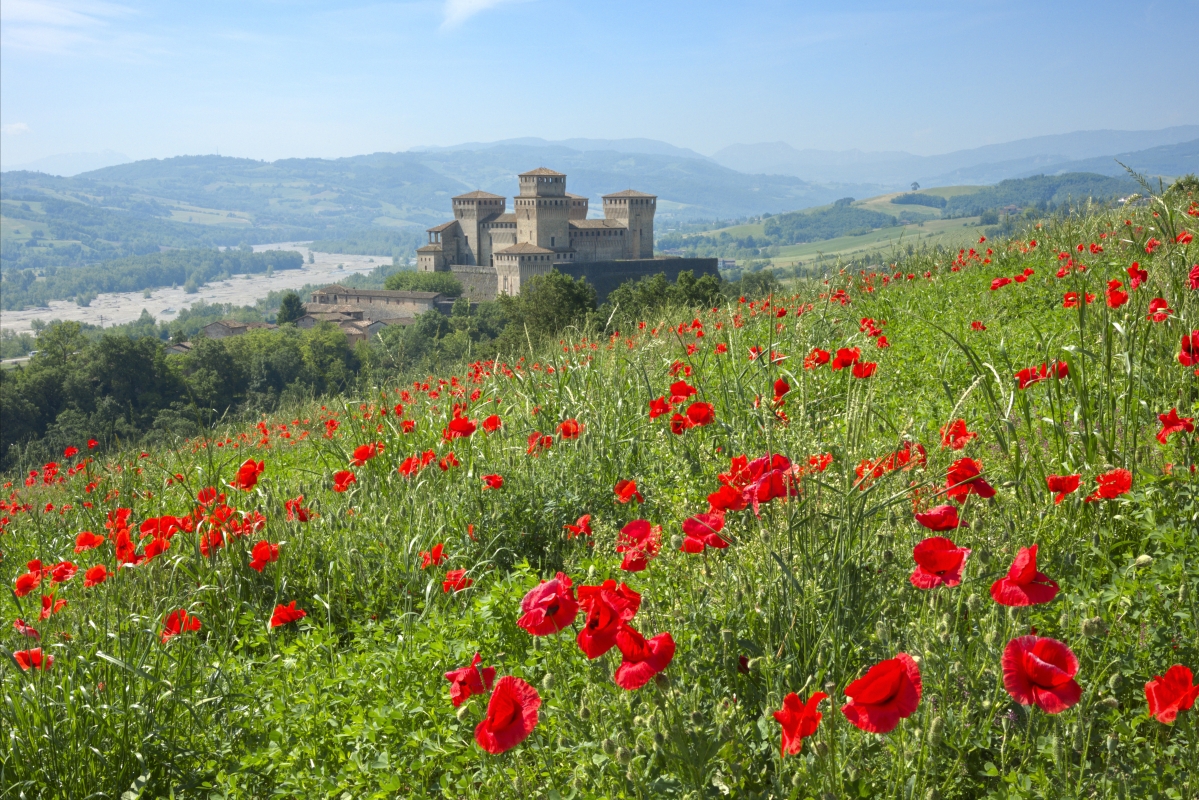
Torrechiara Castle – Photo by Enrico Robetto
The Apennine starts instead in the south of the Via Emilia to reach the high ridge lands on the border with Liguria and Tuscany. The Valleys are those of Ceno, del Taro, and Parma, born from the corrosion of the three respective watercourses. The landscape wonders, the legendary castles, the clear air and the historical testimonies allow you to live these areas of the border in an intense and satisfying way.
HOW TO GET TO PARMA
Parma is located in northern Italy, in Emilia-Romagna, halfway between Bologna and Milan. A strategic position that allows you to quickly reach others destinations such as Venice, Ferrara, and Verona.
BY PLANE
The Giuseppe Verdi Airport is connected to the center by bus and taxi, available at all hours. As an alternative, it is possible to use the Guglielmo Marconi Airport in Bologna or the international and intercontinental Malpensa Airport in Milan.
BY TRAIN
Railway Station is connected to the most important national railway lines, and it can be easily reached in 1 hour from Bologna and Milan Stations.
BY CAR
It is possible to reach Parma by car either through the A1 motorway – Parma exit – or through the CISA A15 motorway – Parma Ovest exit – which connects the city to the Mediterranean Sea and to the major harbors of Liguria and Tuscany.
(The city center of Parma is a limited traffic zone, here more information on where to park)
Author

Walter Manni
Explorer and Adventurer: loves sailing the oceans, climbing the highest mountains and surfing on the waves of the web
Sandra Warren
I’m sooooo curious as to why you would choose to use a French song in a video to promote a city in Italy. That doesn’t make any sense to me and in fact I had a hard time enjoying the video because of it.
Walter Manni
Hello Sandra,
I took your advice 😉
Thank you for your time